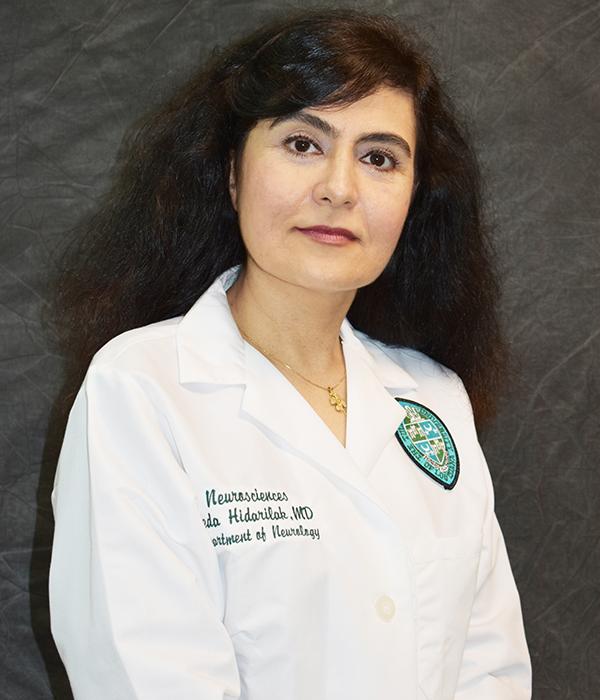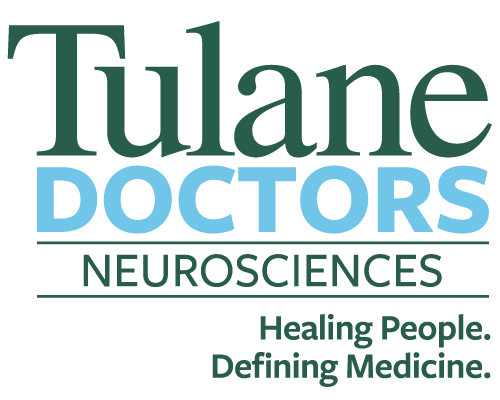Tremor is most commonly classified by its appearance and cause or origin. There are more than 20 types of tremor. Some of the most common forms of tremor include:
Essential tremor
Essential tremor (previously also called benign essential tremor or familial tremor) is one of the most common movement disorders. The exact cause of essential tremor is unknown. For some people this tremor is mild and remains stable for many years. The tremor usually appears on both sides of the body, but is often noticed more in the dominant hand because it is an action tremor.
The key feature of essential tremor is a tremor in both hands and arms, which is present during action and when standing still. Additional symptoms may include head tremor (e.g., a “yes” or “no” motion) without abnormal posturing of the head and a shaking or quivering sound to the voice if the tremor affects the voice box. The action tremor in both hands in essential tremor can lead to problems with writing, drawing, drinking from a cup, or using tools or a computer.
Tremor frequency (how “fast” the tremor shakes) may decrease as the person ages, but the severity may increase, affecting the person’s ability to perform certain tasks or activities of daily living. Heightened emotion, stress, fever, physical exhaustion, or low blood sugar may trigger tremor and/or increase its severity. Though the tremor can start at any age, it most often appears for the first time during adolescence or in middle age (between ages 40 and 50). Small amounts of alcohol may help decrease essential tremor, but the mechanism behind this is unknown.
About 50 percent of the cases of essential tremor are thought to be caused by a genetic risk factor (referred to as familial tremor). Children of a parent who has familial tremor have greater risk of inheriting the condition. Familial forms of essential tremor often appear early in life.
For many years essential tremor was not associated with any known disease. However, some scientists think essential tremor is accompanied by a mild degeneration of certain areas of the brain that control movement. This is an ongoing debate in the research field.
Dystonic tremor
Dystonic tremor occurs in people who are affected by dystonia—a movement disorder where incorrect messages from the brain cause muscles to be overactive, resulting in abnormal postures or sustained, unwanted movements. Dystonic tremor usually appears in young or middle-aged adults and can affect any muscle in the body. Symptoms may sometimes be relieved by complete relaxation.
Although some of the symptoms are similar, dystonic tremor differs from essential tremor in some ways. The dystonic tremor:
- is associated with abnormal body postures due to forceful muscle spasms or cramps
- can affect the same parts of the body as essential tremor, but also—and more often than essential tremor—the head, without any other movement in the hands or arms
- can also mimic resting tremor, such as the one seen in Parkinson’s disease.
- Also, the severity of dystonic tremor may be reduced by touching the affected body part or muscle, and tremor movements are “jerky” or irregular instead of rhythmic.
Cerebellar tremor
Cerebellar tremor is typically a slow, high-amplitude (easily visible) tremor of the extremities (e.g., arm, leg) that occurs at the end of a purposeful movement such as trying to press a button. It is caused by damage to the cerebellum and its pathways to other brain regions resulting from a stroke or tumor. Damage also may be caused by disease such as multiple sclerosis or an inherited degenerative disorder such as ataxia (in which people lose muscle control in the arms and legs) and Fragile X syndrome (a disorder marked by a range of intellectual and developmental problems). It can also result from chronic damage to the cerebellum due to alcoholism.
Psychogenic tremor
Psychogenic tremor (also called functional tremor) can appear as any form of tremor. It symptoms may vary but often start abruptly and may affect all body parts. The tremor increases in times of stress and decreases or disappears when distracted. Many individuals with psychogenic tremor have an underlying psychiatric disorder such as depression or post-traumatic stress disorder (PTSD).
Physiologic tremor
Physiologic tremor occurs in all healthy individuals. It is rarely visible to the eye and typically involves a fine shaking of both of the hands and also the fingers. It is not considered a disease but is a normal human phenomenon that is the result of physical properties in the body (for example, rhythmical activities such as heartbeat and muscle activation).
Enhanced physiologic tremor
Enhanced physiological tremor is a more noticeable case of physiologic tremor that can be easily seen. It is generally not caused by a neurological disease but by reaction to certain drugs, alcohol withdrawal, or medical conditions including an overactive thyroid and hypoglycemia. It is usually reversible once the cause is corrected.
Parkinsonian tremor
Parkinsonian tremor is a common symptom of Parkinson’s disease, although not all people with Parkinson’s disease have tremor. Generally, symptoms include shaking in one or both hands at rest. It may also affect the chin, lips, face, and legs. The tremor may initially appear in only one limb or on just one side of the body. As the disease progresses, it may spread to both sides of the body. The tremor is often made worse by stress or strong emotions. More than 25 percent of people with Parkinson’s disease also have an associated action tremor.
Orthostatic tremor
Orthostatic tremor is a rare disorder characterized by rapid muscle contractions in the legs that occur when standing. People typically experience feelings of unsteadiness or imbalance, causing them to immediately attempt to sit or walk. Because the tremor has such a high frequency (very fast shaking) it may not visible to the naked eye but can be felt by touching the thighs or calves or can be detected by a doctor examining the muscles with a stethoscope. In some cases the tremor can become more severe over time. The cause of orthostatic tremor is unknown.


